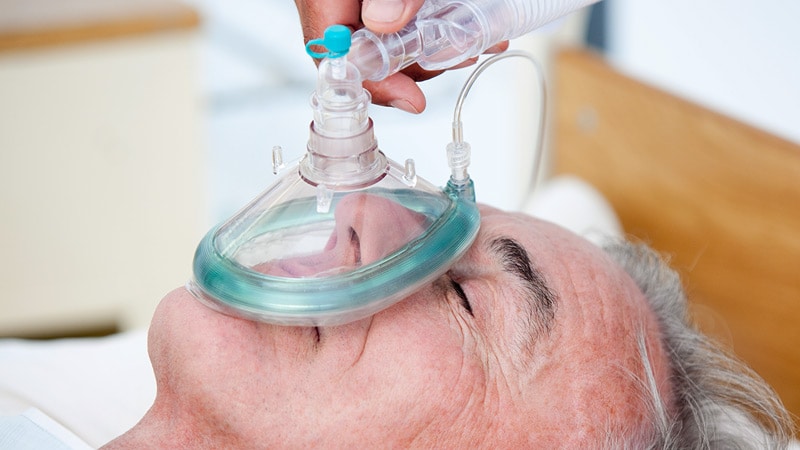Risk Calculator May Help Predict Death After COPD Hospitalization
Researchers in Scotland have developed a risk calculator using a large electronic health records database that has shown a high reliability in predicting the risk of death for patients hospitalized for chronic occlusive pulmonary disease (COPD), providing another potential tool for improving post-discharge survival in these patients.
In a study published online in the journal Pharmacological Research, Pierpalo Pellicori, MD, and colleagues reported that a few variables, including prescriptions and laboratory data in routine electronic health records (EHRs), could help predict a patient’s risk of dying within 90 days after a hospital stay for COPD. Pellicori is a clinical cardiologist and research fellow at the Robertson Center for Biostatistics at the University of Glasgow in Scotland.
“Identification of patients at high risk is valuable information for multidisciplinary teams,” Pellicori said in written comments submitted to Medscape Medical News. “It allows the most vulnerable patients to be highlighted and prioritized for consideration of optimized value-based care, and for anticipatory care plan discussions.”
The retrospective cohort study analyzed EHR records of 17,973 patients who had an unplanned hospitalization for COPD in the Glasgow area from 2011 to 2017. The risk calculator model achieved a potential accuracy of 80%.
The study noted that while a number of models have been developed to calculate the risk of exacerbations, inpatient death and prognosis in patients hospitalized for COPD, most of those models were based on cohorts of 1000 patients or less.
“Older age, male sex, and a longer hospital stay were important predictors of mortality in patients with COPD,” Pellicori said. “We also found that use of commonly prescribed medications such as digoxin identify patients with COPD more likely to die, perhaps because many have underlying heart failure, a highly prevalent but frequently missed diagnosis.”
He noted that heart failure and COPD share many risk factors, signs, and symptoms, such as smoking history, peripheral edema, and breathlessness. “Distinguishing between COPD and heart failure can be difficult, but is very important, as appropriate treatment for heart failure can improve a patient’s quality of life and survival substantially in many cases,” he said.
The study also found that routinely collected and inexpensive blood markers — such as hemoglobin, neutrophil/lymphocyte ratio, serum chloride, urea, creatinine, and albumin — can also improve predictability of outcomes.
For example, the study found a linear increase in mortality of blood hemoglobin concentration < 14 g/dL, but higher levels posed no greater risk. Higher white blood cell and neutrophil counts and lower lymphocyte and eosinophil counts were associated with a worse prognosis.
The study also found a linear increase in mortality with serum sodium < 140 mmol/L or serum chloride < 105 mmol/L — but that higher concentrations of each were associated with a worse outcome.
“Interestingly,” Pellicori added, “social deprivation was not associated with mortality in this cohort.”
The final predictive model included age, sex, length of stay, and just nine other variables. “The model can be applied easily in clinical practice, even if electronic records are not available, because there are only 12 variables,” Pellicori said. “These could easily be entered manually into the risk-calculator that we provide.”
“What is notable about this risk calculator is that it uses some of the techniques of machine learning, although it’s not specifically machine learning,” Angel Coz, MD, a pulmonologist at the Cleveland Clinic Respiratory Institute in Ohio, said to Medscape Pulmonology. “But it’s a retrospective data analysis, and actually by doing that it may catch some factors that we may not have necessarily paid attention to on a regular basis.”
While he called it a “well-done study,” Coz cautioned that “we have to be conservative in how to interpret and apply this because it is retrospective.” Coz added that future research should also use a prospective cohort.
For future consideration, Pellicori said that while EHRs provide a “rich source” of data for such risk calculators, systems differ greatly across hospitals and healthcare systems and don’t link easily.
Future research would focus on validating the model in other large national datasets and seeing if machine learning can improve its predictability, Pellicori said. “Whether such models can provide a real-time, refined risk assessment for all patients in both primary or secondary care settings and improve the efficacy, efficiency, and quality of healthcare is our long-term goal.”
Pellicori and Coz have disclosed no relevant financial relationships.
Pharmacol Res. Published online April 4, 2022. Full text
For more news, follow Medscape on Facebook, Twitter, Instagram, and YouTube.
Source: Read Full Article
